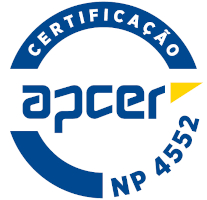2024
Agricultural Hydrology
Name: Agricultural Hydrology
Code: ERU13827L
6 ECTS
Duration: 15 weeks/156 hours
Scientific Area:
Rural Engineering
Teaching languages: Portuguese
Languages of tutoring support: Portuguese, English
Regime de Frequência: Presencial
Sustainable Development Goals
Learning Goals
Acquisition of knowledge of hydrology with regard to the different applications and analyzes of the water resource, in the agronomic scope.
Understanding of the relation between water in the atmosphere with meteorological phenomena, formation of climate and agriculture.
Knowledge of the general water cycle. Evaluation of the components and the relations between them.
Human influence on the natural cycle of water.
Quantification of the water resources and of their availability for Agriculture.
Essential capacities to manage water in irrigated agriculture.
Understanding of the relation between water in the atmosphere with meteorological phenomena, formation of climate and agriculture.
Knowledge of the general water cycle. Evaluation of the components and the relations between them.
Human influence on the natural cycle of water.
Quantification of the water resources and of their availability for Agriculture.
Essential capacities to manage water in irrigated agriculture.
Contents
1 - Water cycle and water distribution on earth.
2 - Watershed: Watershed Physiographic characterization.
3 - Climate: Types of climate and climatic classifications.
4 - Precipitation: Measurement of precipitation. Spatial-temporal distribution of precipitation. Statistical analysis of precipitation series. Storm precipitations.
5 - Surface runoff: Measurement of runoff. Spatial-temporal distribution of runoff. Determination of runoff in absence of measures.
6 Evaporation and evapotranspiration: Measurement of evaporation and evapotranspiration. Determination of reference evapotranspiration.
7 Soil water: Determination of soil water content. Infiltration.
8 Groundwater: Aquifer recharge. The dynamics of groundwater use.
9 Hydrologic balance: Thornthwaite-Matter monthly sequential hydrological cycle.
2 - Watershed: Watershed Physiographic characterization.
3 - Climate: Types of climate and climatic classifications.
4 - Precipitation: Measurement of precipitation. Spatial-temporal distribution of precipitation. Statistical analysis of precipitation series. Storm precipitations.
5 - Surface runoff: Measurement of runoff. Spatial-temporal distribution of runoff. Determination of runoff in absence of measures.
6 Evaporation and evapotranspiration: Measurement of evaporation and evapotranspiration. Determination of reference evapotranspiration.
7 Soil water: Determination of soil water content. Infiltration.
8 Groundwater: Aquifer recharge. The dynamics of groundwater use.
9 Hydrologic balance: Thornthwaite-Matter monthly sequential hydrological cycle.
Teaching Methods
Theoretical-practical classes.
Evaluation: Practical work and reports (50%).2 Tests or a final exam (50%).
Evaluation: Practical work and reports (50%).2 Tests or a final exam (50%).
Teaching Staff
- Carlos Manuel Miranda Rodrigues [responsible]





















